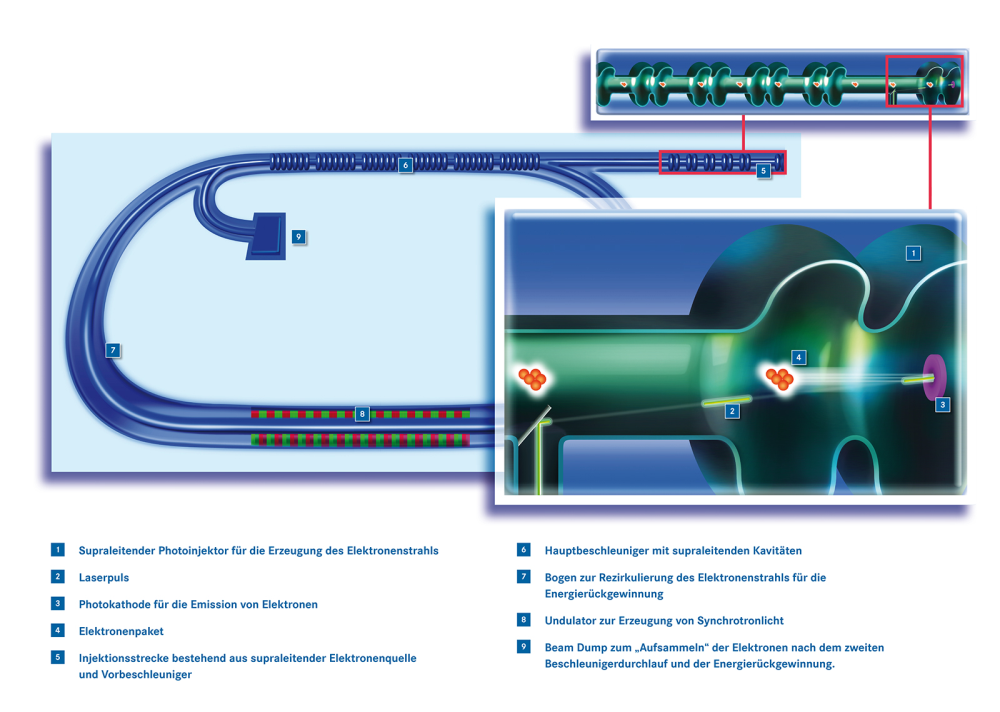bERLinPro
From Storage Rings to ERLs
Storage rings have been served Synchrotron Radiation facilities from their beginnings. At this time it was very beneficial, that the electron beam quality in a storage ring results from an equilibrium between radiation excitation and damping. This equilibrium state is reached within seconds or even faster so that the limited beam quality of the electron sources at that time had no influence on the storage ring beam quality. Unfortunately, what has been an advance in the past has become a major limitation for current Synchrotron light sources: with the electron sources available today even better beams can be generated compared to those in the equilibrium state of “conventional” storage rings.
To overcome this limitation linacs are used nowadays. Here the energy efficient storage of the electrons is surrendered, to avoid the radiation excitation beam blow up. After using (for light generation) the high quality beam is dumped and with it the energy, invested for its acceleration. At high electron energies the available RF power limits the beam current to be accelerated to the mA range.
At this point the ERL extends the linac concept by redirecting the spent beam back through the accelerator, To recover the energy instead of further accelerating the beam, the linac is passed with an RF phase lag of 180 degree on this second pass, compared to that of the accelerating fist one. The required phase advance is adjusted by the path length trough the recirculating magnet structure. In this way almost all of the invested energy can be recovered. Picture!
In order to keep the accelerating structures and thus the whole machine as compact as possible the cavities are operated with RF fields of very high amplitude. The currents excited in the cavity walls are accordingly high and generate (via resistive losses) an enormous amount of heat, leading to immediate melting damages on normal metal structures. This problem can be solved by using cavities made from superconducting materials, operated at temperatures close to the absolute zero. In the superconducting state the resistivity of the material drops down by many orders of magnitude. The heating power of the currents in the cavity walls is reduced accordingly. At present liquid Helium cooled (Temperature lower than 2.2 K) Niobium cavities are widely used.

